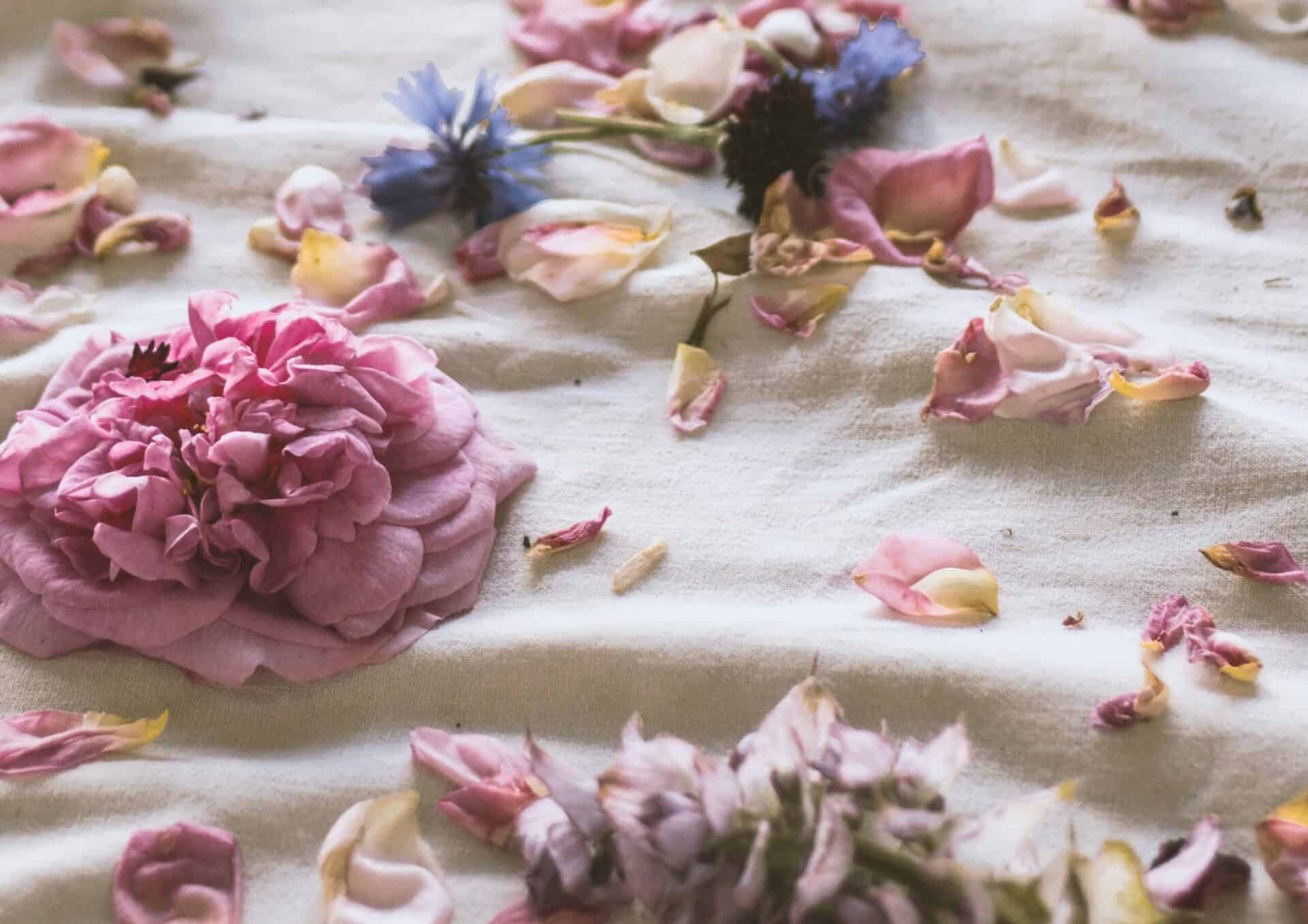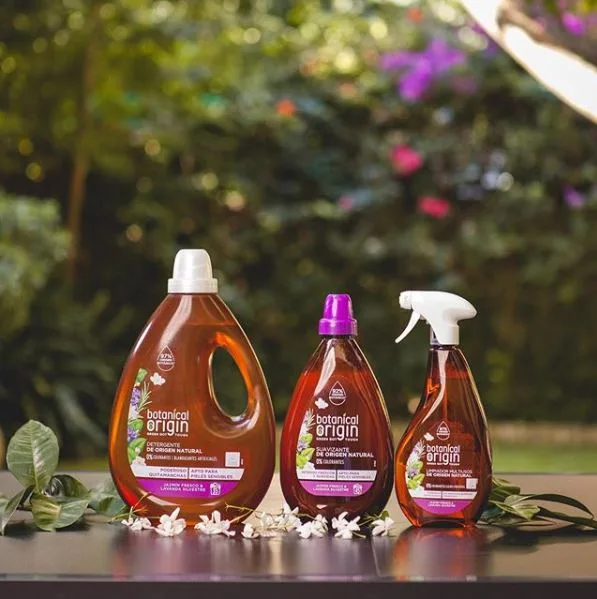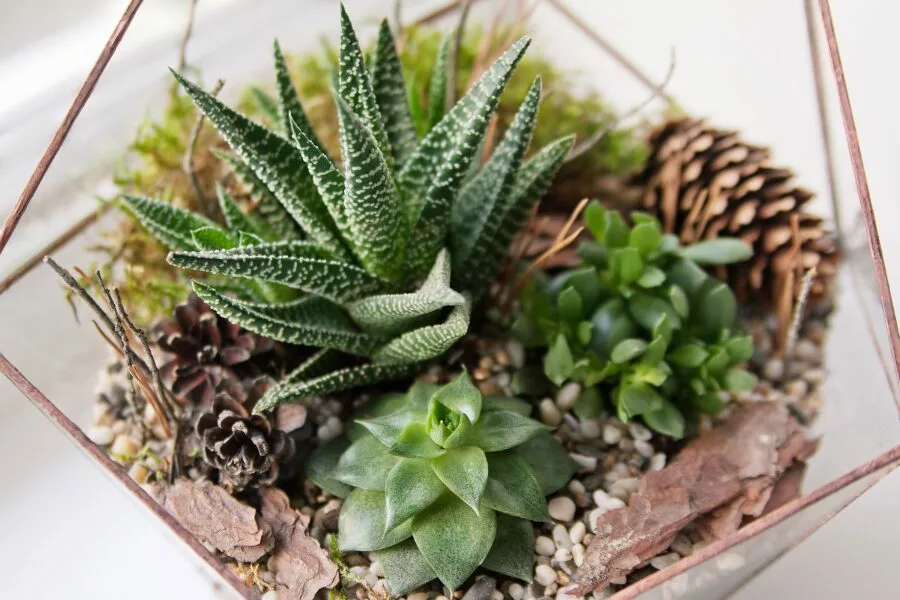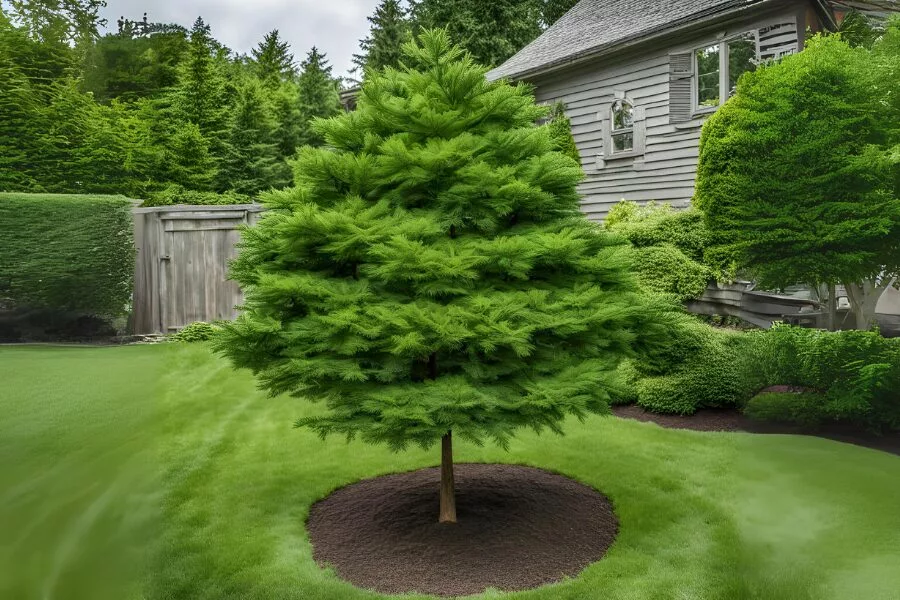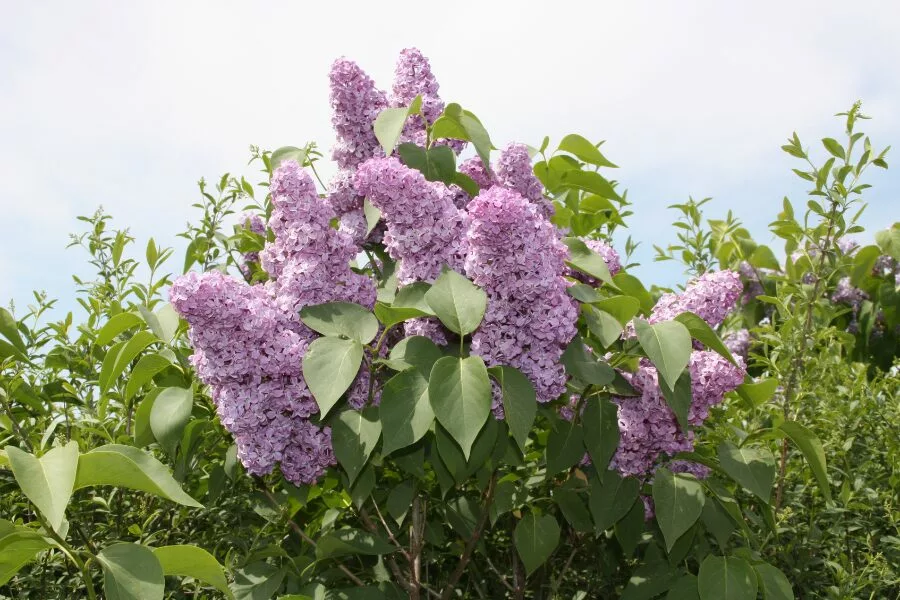Are you an eco-conscious individual looking for a sustainable and artistic way to express yourself? Are you a DIY enthusiast eager to explore new crafting techniques? If any of these resonate with you, then you’re in for a treat! Plant hammer printing, also known as botanical hammer printing, represents a distinctive artistic expression that employs organic elements and earth-friendly dyes to fashion exquisite designs on various substrates like fabric or paper.
This creative medium seamlessly integrates with sustainable lifestyle choices. It promotes the utilization of organic resources, diminishes reliance on artificial coloring agents, and curtails wastage. Join us as we embark on a journey to uncover the captivating blend of artistic ingenuity and environmentally green living!

What is Plant Hammer Printing?
Plant hammer printing, also known as ’Hapa Zome,’ is an innovative technique that transfers botanical specimens’ intricate details and vibrant colors onto fabric. This process entails placing fresh flowers or leaves onto fabric and gently hammering them. This simple yet ingenious technique results in captivating botanical prints that can be used for various artistic and creative projects. While Australian textile artist India Flint popularised the term ’Hapa Zome,’ this method is believed to have been practiced for centuries, possibly tracing back to Japan. This historic practice emphasizes the relationship between nature and art, aligning well with the ethos of sustainable living.
Its minimalistic approach sets plant hammer printing apart from traditional printing methods. Unlike traditional plant printing techniques that often involve complex machinery, chemicals, and energy-intensive processes, plant hammer printing relies solely on the natural pigments in flowers and leaves. This simplicity connects us more deeply with nature and significantly reduces the carbon footprint associated with art and craft. Plant hammer printing champions art and sustainability in various ways. Firstly, it employs organic materials – the flowers and leaves – which minimize the use of synthetic resources. Additionally, the absence of chemical dyes or inks means no toxic waste is generated during the process.
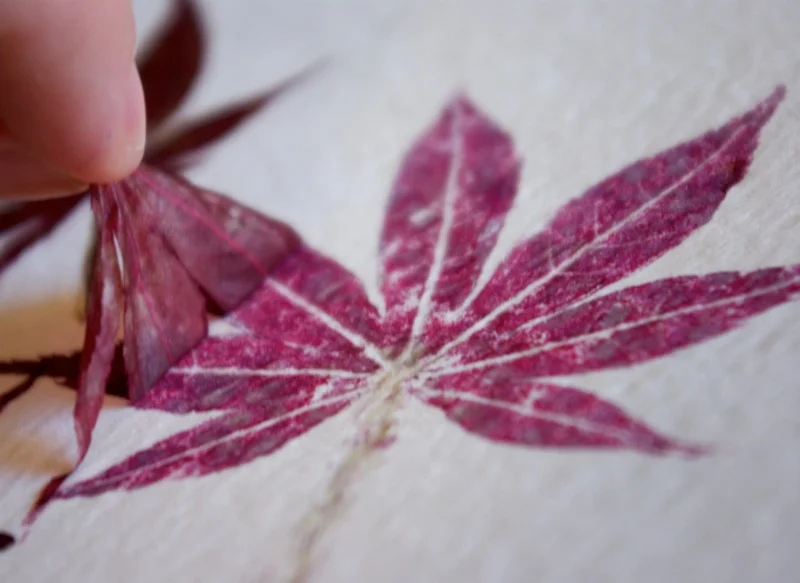
The Science Behind Plant Hammer Printing
The vibrant colors of flowers and leaves aren’t just for show; they result from intricate pigments that have evolved to attract pollinators and deter predators. When you hammer these botanical specimens onto fabric, you’re essentially rupturing the cell walls and releasing these pigments. As they seep into the fabric, they create intricate and unique patterns, capturing the plant’s essence in stunning detail.
The hammer serves as a tool of transfer in plant hammer printing. It aids in the breakdown of the botanical specimens’ cell structures, allowing the fabric to absorb their natural pigments. The choice of hammer and technique used can influence the outcome of the print; softer strikes may result in subtle, delicate prints, while firmer strikes could yield more vivid and pronounced designs. Moreover, this technique encourages us to appreciate the beauty of our natural surroundings, fostering a deeper connection to the environment and promoting sustainable practices.

Why Plant Hammer Printing is Sustainable
Plant hammer printing is sustainable because of the following reasons:
Low Environmental Impact
One of the key reasons why plant-hammer printing is considered a sustainable art form is its low environmental impact. Unlike traditional printing techniques that often involve harmful chemicals and excessive energy consumption, plant hammer printing relies solely on natural materials.
Use of Natural Materials
Plant hammer printing uses organic materials such as leaves, flowers, and stems, which are biodegradable and easily accessible. Utilizing these natural materials reduces the demand for synthetic art supplies that contribute to pollution and waste.
Comparison with Other Sustainable Art Forms
It stands out as a more sustainable option when comparing plant-hammer printing to other art forms. Traditional painting techniques often require non-renewable resources and toxic chemicals, whereas plant hammer printing relies on the abundant resources found in nature.
Generates Less Waste
Plant-hammer printing generates minimal waste. The plants used for printing can often be sourced from your garden, local parks, or even on nature walks. This minimizes the need for excess packaging and transportation, which are common sources of waste in the art industry.
Non-Toxic in Nature
Unlike many conventional art supplies that contain harmful chemicals, plant hammer printing uses natural dyes and pigments extracted from plants. This means the process is non-toxic, making it safe for artists and the environment.
Uses Renewable Resources
The materials used in plant hammer printing, such as leaves and flowers, are renewable resources that can be regrown and harvested sustainably. This contrasts with traditional art materials like acrylic paints, which rely on finite petroleum-based resources.
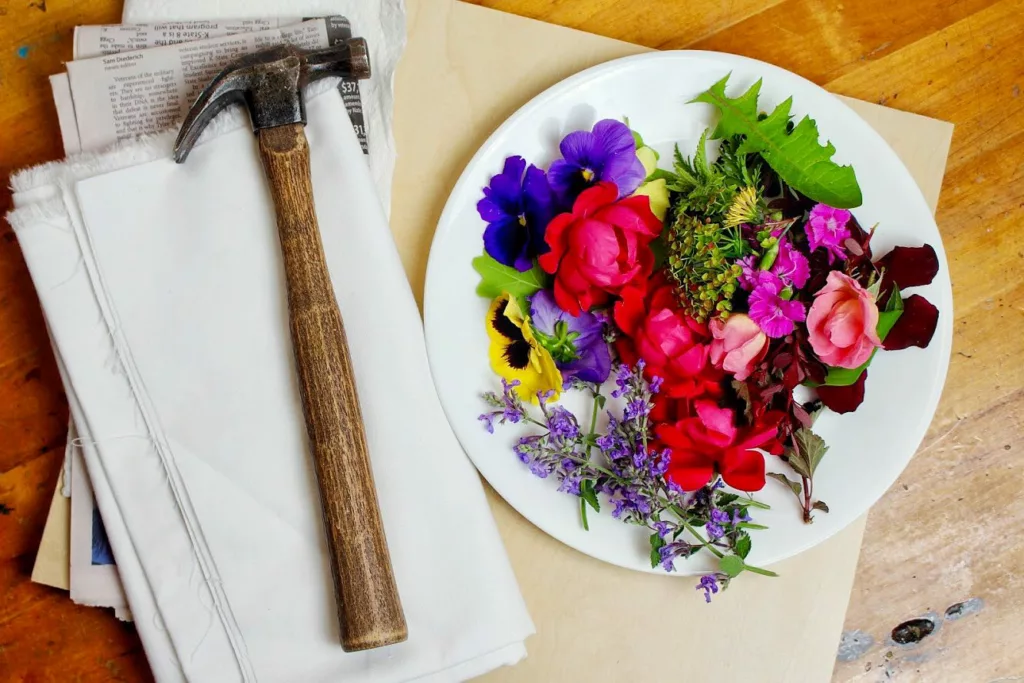
Materials Required for Your DIY Project
For DIY plant hammer printing, you’ll need a few essential materials:
Types of Plants That Work Best
When it comes to plant hammer printing, not all plants are created equal. Some plants work exceptionally well due to their vibrant colors and distinct textures. Consider using leaves from maple trees, ferns, eucalyptus, rose petals, and sunflower heads for the best results. Some good options include:
- Leaves: All shapes and sizes can be used for plant hammer printing. Some popular choices include oak leaves, maple leaves, and cabbage leaves.
- Flowers: Flowers are another great option for plant hammer printing. Some popular choices include roses, lilies, and sunflowers.
- Berries: Berries can also be used. Some popular choices include blueberries, raspberries, and strawberries.
- Vegetables: Vegetables work too! Some popular choices include carrots, potatoes, and tomatoes.
Types of Hammers and Surfaces
Any hammer type can be used for plant hammer printing, but a flat-head hammer is the best option. A rubber mallet can also be used. The best hammers for plant hammer printing will make a better print with the plant’s juices. Some good options include:
- Ball Peen Hammer: Ideal for precise prints with its rounded head
- Sledgehammer: For larger and bolder imprints.
- Rubber Mallet: Gentle on delicate plant materials.
- Claw Hammer: Offers versatility for various textures.
When it comes to surfaces, experiment with a variety of materials, including paper, fabric, and even wood. The texture and absorbency of the surface will influence the final result.
- Fabric: Fabric is a great option for plant hammer printing because it allows the colours to bleed and creates a more natural look.
- Paper: Paper is also a good option for plant hammer printing but may not hold up to repeated use.
- Wood: Wood is a good option for creating more permanent prints.
Eco-Friendly Inks and Dyes
Consider using natural dyes made from ingredients like turmeric, beetroot, and indigo to add color to your prints. These dyes are not only environmentally friendly but also yield stunning results. According to the Environmental Protection Agency, using natural dyes can significantly reduce the environmental impact of textile dyeing.
- Natural Plant Dyes: Craft your own eco-friendly dyes using plant materials like turmeric, beetroot, and indigo.
- Vegetable Inks: Opt for inks made from vegetable-based pigments.
- Water-Based Inks: They are non-toxic and easy to clean up.
- Eco-Friendly Paints: Look for paints that are free from harmful chemicals and solvents.
- Recycled Materials: Use recycled paper or fabric as your canvas for an eco-friendly touch.
Plant hammer printing allows you to create one-of-a-kind artwork while minimising your environmental impact. Did you know that sustainable art forms like this can help reduce carbon footprints by encouraging the use of organic materials?
Where to Buy Your Supplies
There are several places where you can buy supplies for plant hammer printing. Here are a few recommendations:
Eco-Friendly Stores
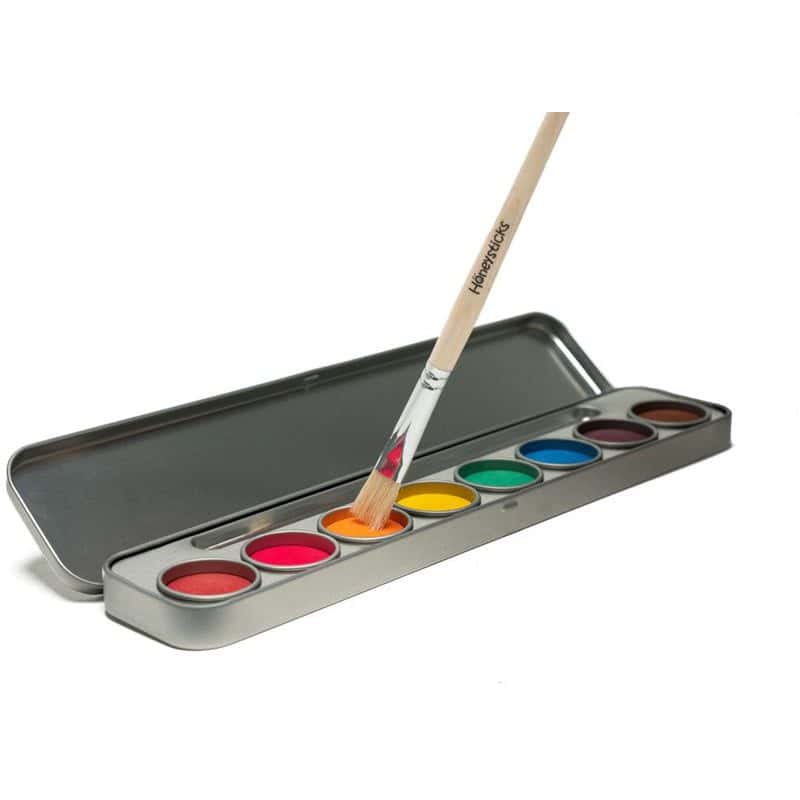
If you’re looking for anything green, Earth Hero has you covered. The company is a top pick since it is dedicated to selling only products that are produced in a sustainable manner from start to finish. It’s only applicable to companies making products from more environmentally friendly materials. The business has partnered with CarbonFund to offset its emissions. They use American-made recyclable and compostable packaging too. Don’t miss their ’Zero Waste’ area which includes sustainable staples such as reusable water bottles, stainless steel straws, and reusable food containers.

Eartheasy has a wide variety of eco-friendly art supplies, including as plant-based inks and natural dyes, in addition to their natural lawn and garden products. Office greenhouse gas emissions are offset, and shipment boxes and packing are reused whenever practical. In addition to partnering with the EPA’s WaterSense programme to spread awareness about water conservation, Eartheasy plants a tree for every online order it receives. Eartheasy also provides camping gear, household items, and eco-friendly gizmos like reusable shopping bags and compost bins.
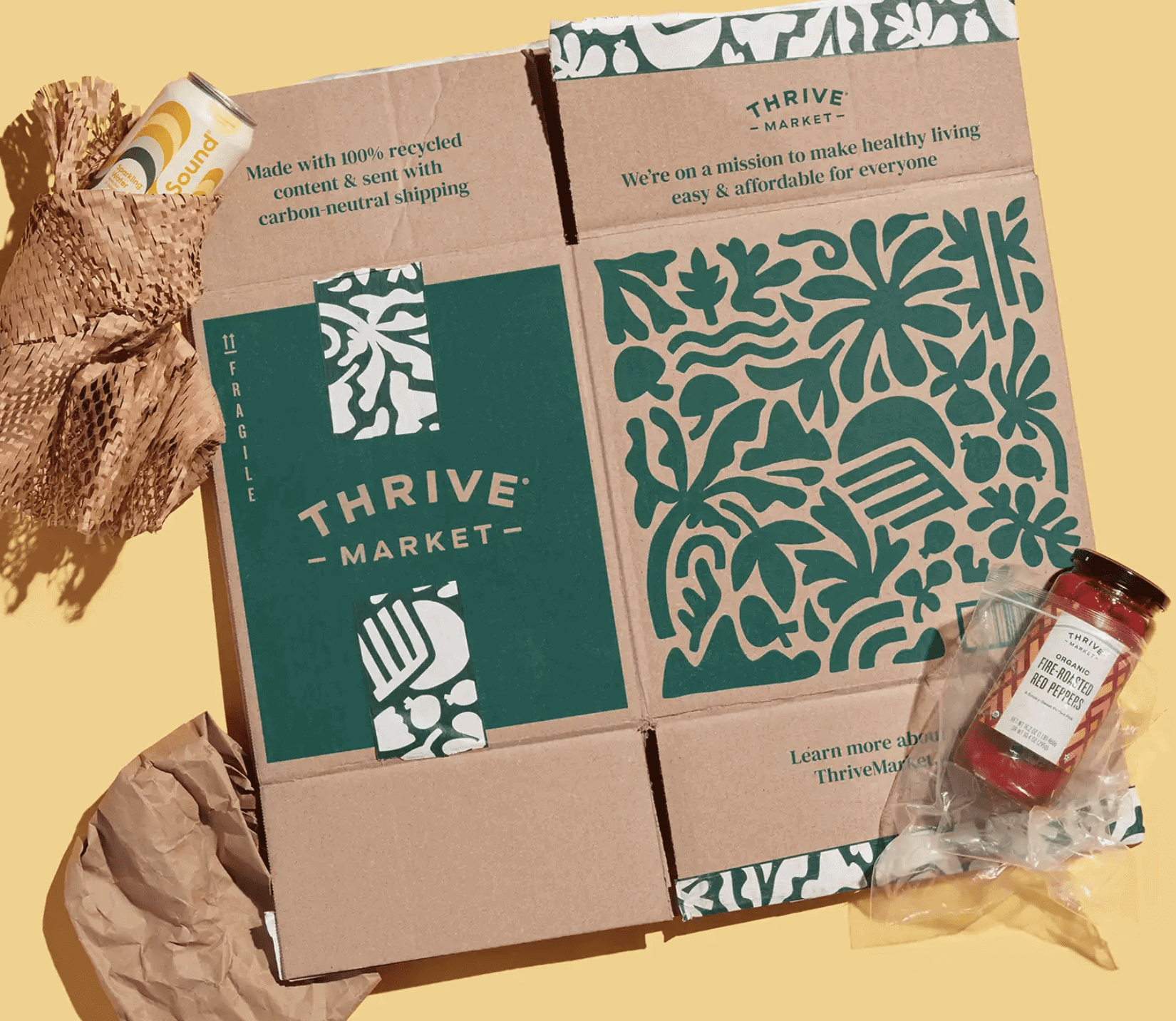
Need non-GMO, organic food delivered right to your doorstep? Try out Thrive Market, a subscription-based online supermarket. Eco-friendly art supplies like plant-based inks and natural dyes may be purchased for as little as $5 per month, with access to over 5,000 sustainable products. Carbon-neutral shipping, zero-waste warehousing, and recyclable/compostable packaging are just a few of the environmental practises that Thrive Market employs. Your membership fee at the market will provide a free membership to a qualifying low-income family, student, teacher, veteran, or first responder. You can give it a try for 30 days without any commitment to see whether it fits your needs.

EcoRoots is committed to environmental improvement; thus, all of their packaging is created from plant-based inks and natural dyes, and they never use any plastic at all when shipping their items. EcoRoots sources its cruelty-free products from a wide variety of local businesses whose philosophies are congruent with its own. Among the many products available from this business are eco-friendly art supplies, including plant-based inks and natural dyes. EcoRoots participates in ’1% for the Planet’ by giving back a percentage of its annual sales to environmental causes.
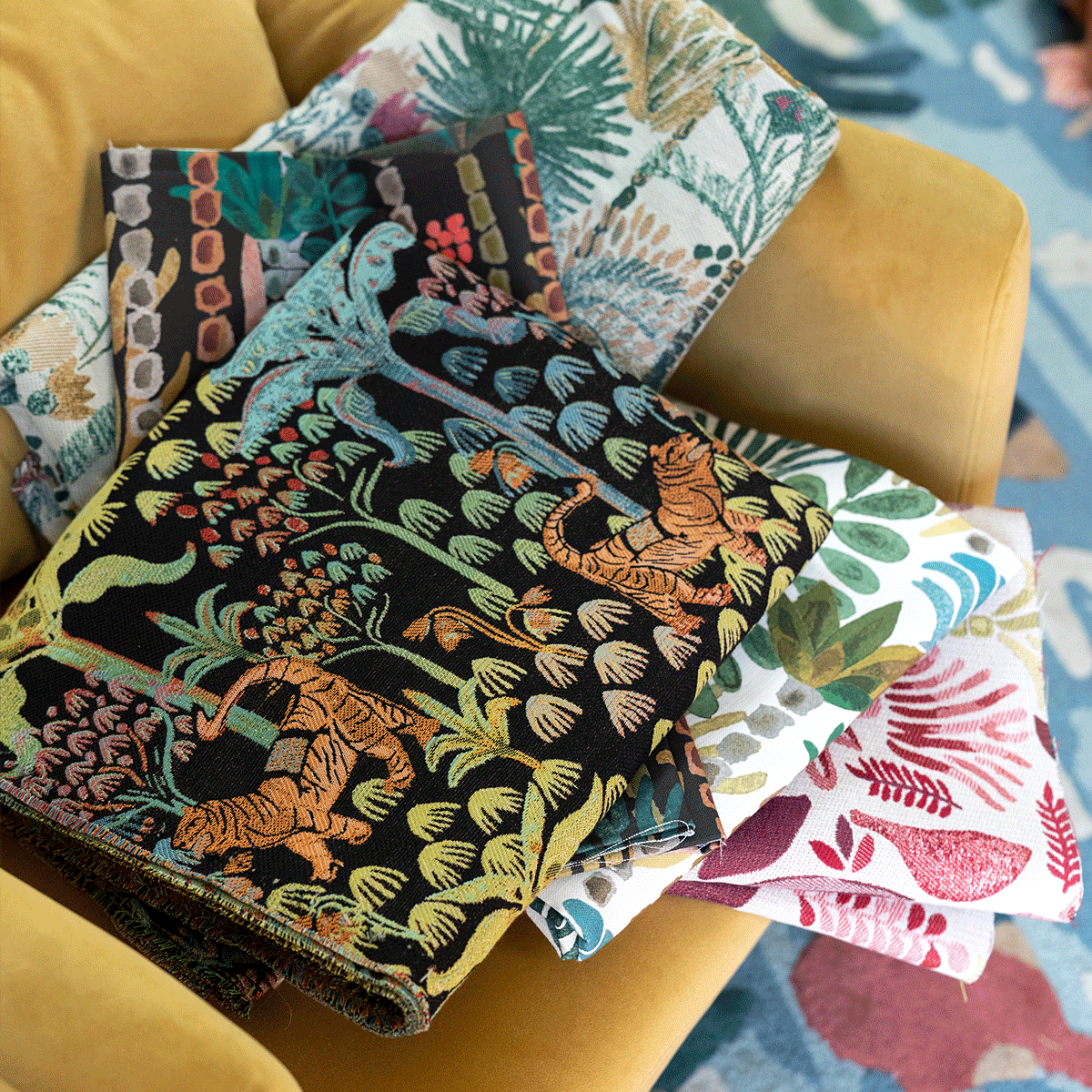
Jungalow collaborates with suppliers all around the world to bring you eco-friendly, handmade goods from natural, recyclable, and biodegradable materials to dress your home in. The ceramics are produced with water efficiency and non-toxic coatings in mind. Traditional dip-dyeing and weaving techniques are used to make rugs in India, and the Oeko-Tex Standard 100 certification system is used to assure that no dangerous elements are contained in the pillows. At least two trees are planted for every item purchased from Jungalow, and thus far the company has planted more than 48,000 trees, improving the environment and bolstering the food and economic security of African communities.
Online Store Options
In 2022, the global market for eco-friendly art supplies witnessed a remarkable 17.3% increase in purchases compared to conventionally marketed products, reflecting a rising interest in sustainable living and art.
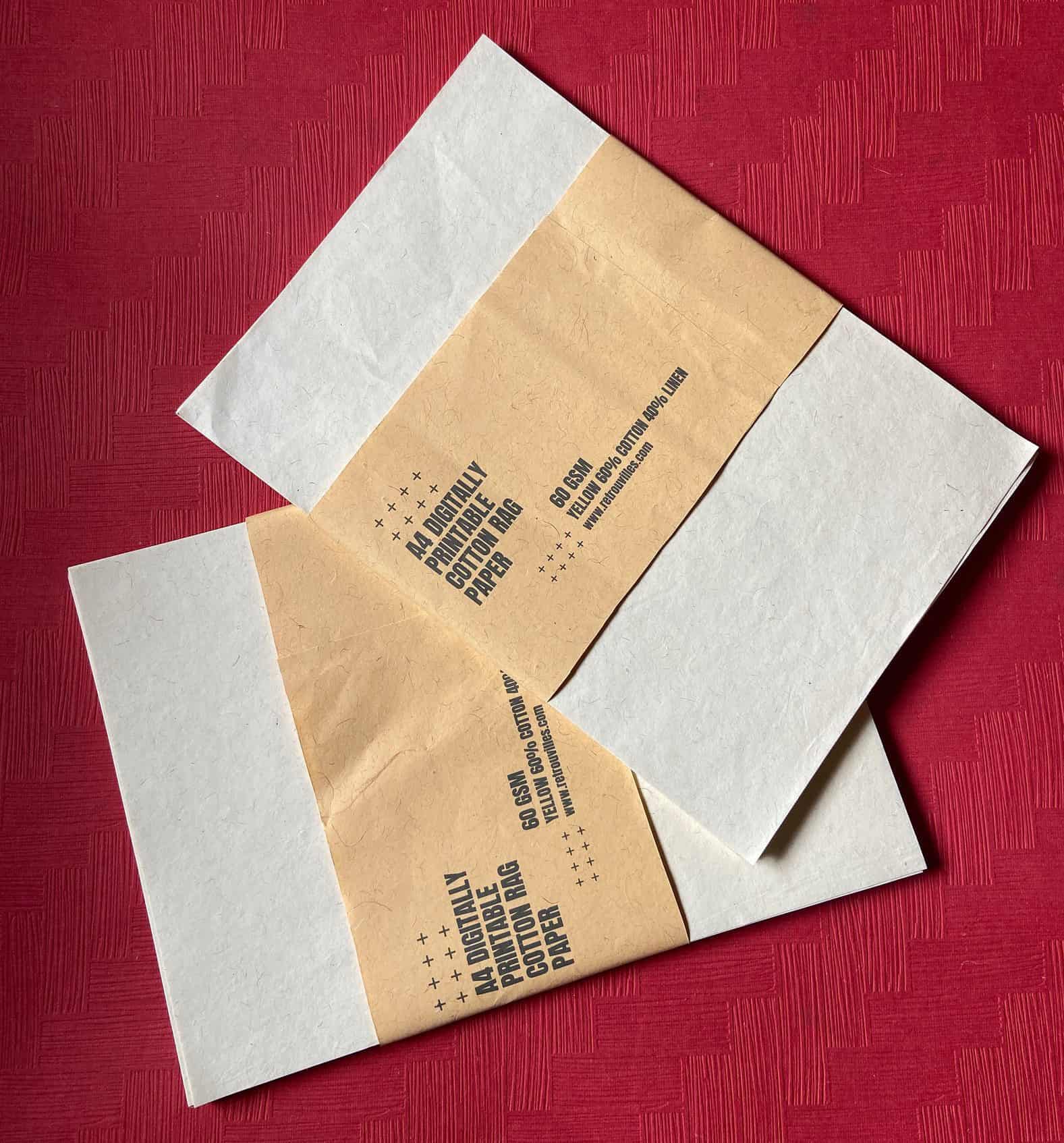
Etsy, a thriving online marketplace, is a haven for eco-conscious shoppers and artisans. It hosts numerous independent shops specializing in eco-friendly arts and eco-friendly craft supplies. From recycled glass beads to biodegradable latex balloons, Etsy offers a vast range of sustainable goodies, making it a go-to destination for green enthusiasts.
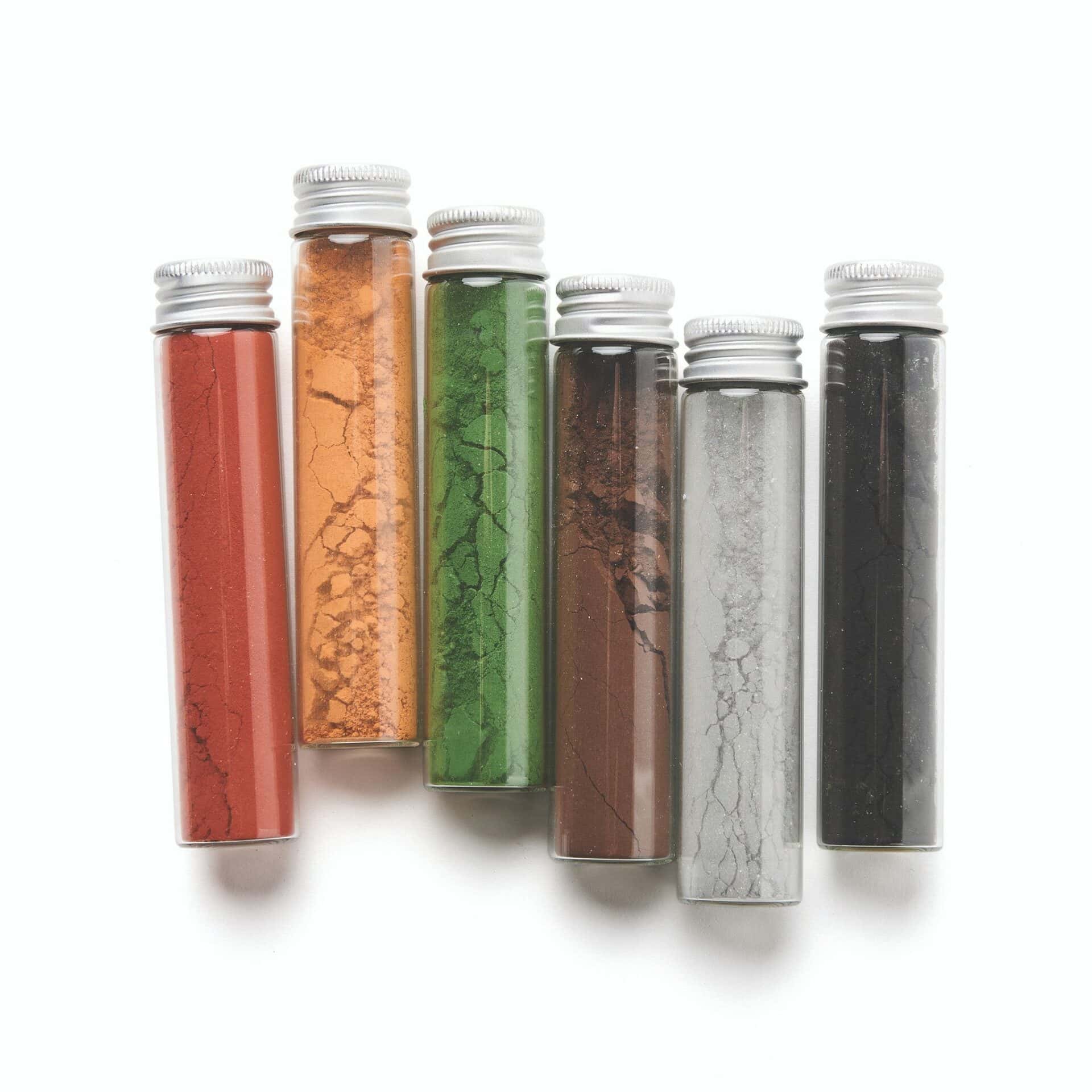
Eco Kids is a treasure trove for parents seeking non-toxic and sustainable art supplies for their children. Their offerings include a Paper Magic Kit for origami, Análú Therapy Dough with therapeutic scents, and organic finger paints made from potatoes, rice, and beans. Ensuring eco-friendly creativity for the next generation.
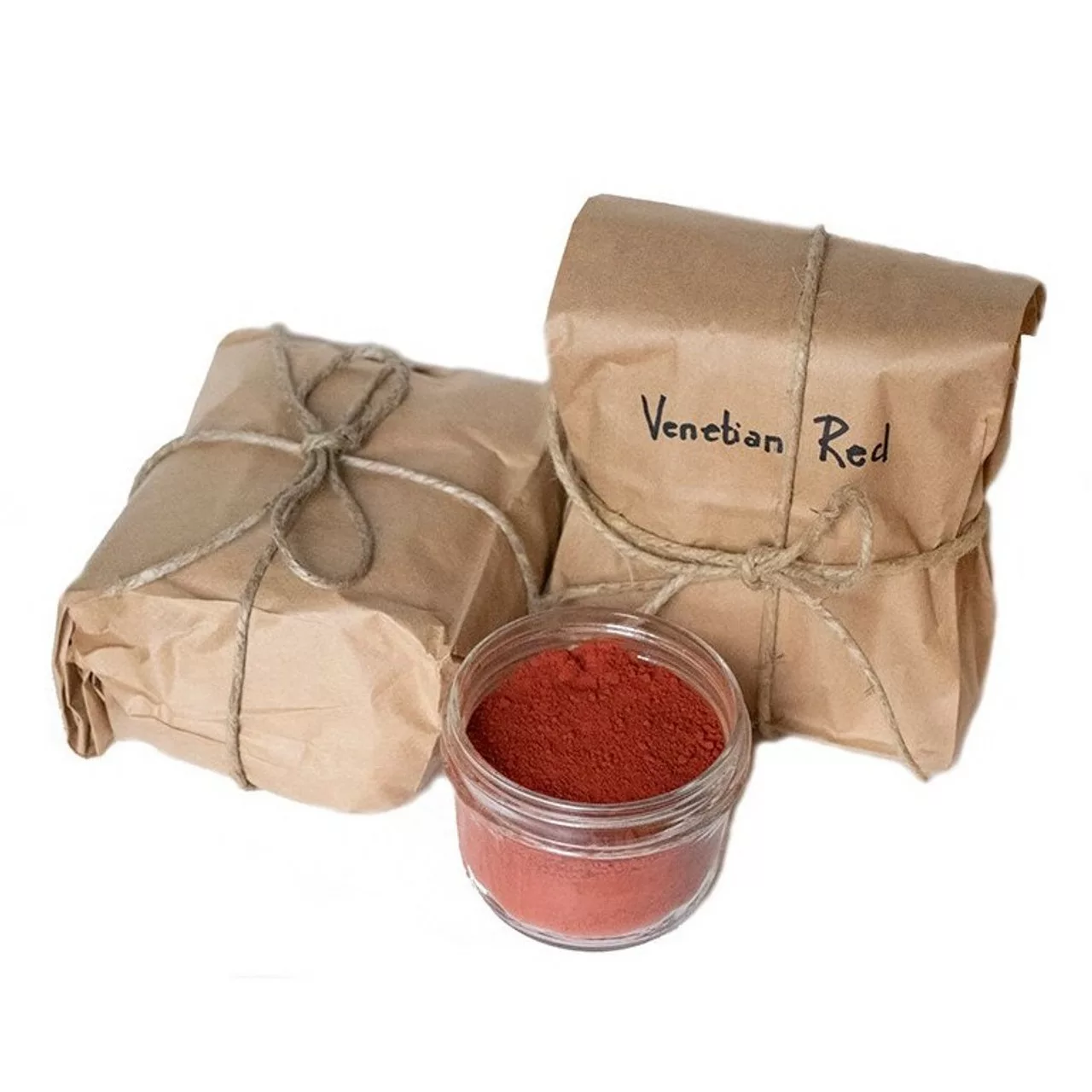
Leah Fanning, an artist and environmentalist, founded Natural Earth Paint, which stands out as a top option for eco-conscious artists. With Green America’s Gold certification and accolades from Forbes and Huffington Post, their eco-friendly paints, recyclable packaging, solar-powered facility, and tree-planting initiatives make them a sustainable art supplier.

Nature of Art is dedicated to offering eco-friendly and safe art materials suitable for both children and artists spanning all generations. Spramani Elaun, an art educator, founded the business, which goes above and beyond simply selling art supplies by hosting kid-friendly creative workshops. Additionally, it allocates a generous 10% of its earnings towards supporting initiatives related to environmental conservation and arts education.

Blick, a renowned name in the art world, is also dedicated to eco-consciousness. They offer a wide range of environmentally friendly art materials, clearly labelled on their site. Moreover, their distribution centre in Galesburg, Illinois, operates with only 10% of the energy typical for similar facilities. Blick is committed to sourcing eco-friendly products, making it a choice that aligns with artists and the environment.
Step-by-Step Guide to Plant Hammer Printing
Preparation
Gather your materials. You will need fabric (any type will work, but natural fabrics like cotton or linen produce the best results), plants (any type of plant can be used, but leaves with strong colors and textures will produce the best prints), a hammer, a flat surface, a water spray bottle, a piece of parchment paper, and a drying rack.
- Soak the fabric in water for 30 minutes. This will help the fabric absorb the plant juices.
- Lay the fabric out flat on a work surface.
- Place a piece of parchment paper over the fabric.
- Arrange the plants on the fabric in the desired pattern.
- Spray the plants with water. This will help to activate the plant juices.
- Use the hammer to tap the plants gently. This will transfer the plant juices to the fabric.
- Continue tapping the plants until you are happy with the print.
- Carefully remove the plants from the fabric.
- Let the fabric dry completely on a drying rack.
The printing process is the most important part of plant hammer printing. It is critical to tap the plants to avoid damaging the fabric. You could also experiment with other types of plants and pressure levels to see what results you get.
When the fabric is dry, iron it or apply a coat of fabric sealer. You may also use the fabric to construct purses, pillows, and apparel.

Tips and Tricks
Here are some tips and tricks for getting the best results with plant hammer printing:
- Use fresh plants. The older the plant, the weaker the color will be.
- Choose plants with strong colors and textures. These will produce the best prints.
- Soak the fabric in water for 30 minutes before printing. This will help the fabric absorb the plant juices.
- Spray the plants with water before printing. This will help to activate the plant juices.
- Use a gentle touch when tapping the plants. If you press too firmly, the fabric will be damaged.
- Experiment with different plant varieties and pressure levels to see what happens.
- Finish the fabric by ironing it or adding a coat of fabric sealant.
Common Mistakes to Avoid
Here are some common mistakes to avoid when plant hammer printing:
- Using old or dried plants. This will result in weak colors and poor prints.
- Not soaking the fabric in water before printing. This will prevent the fabric from absorbing the plant juices.
- Do not spray the plants with water before printing. This will prevent the plant juices from activating.
- Pressing too hard when tapping the plants. This will damage the fabric.
- Not finishing the fabric after printing. This will make the prints fade over time.

Advanced Craft Techniques You Can Try
Once you have mastered the basic technique of plant hammer printing, you can experiment with some advanced techniques to create more complex and interesting prints.
Mixing Colors
You can mix different plant pigments to create new colors. For example, you can mix yellow and blue plants to create green prints.
Layering Prints
You can layer different prints on top of each other to create more depth and complexity. For example, you could print a simple leaf pattern on fabric and then layer a more detailed flower print on top.
Creating Patterns
You can create patterns using different plants or repeating the same plant in a specific arrangement. For example, you could create a checkerboard pattern by printing alternating rows of two plants.
Expert Advice
Here are a few quotes or tips from artists who specialize in plant hammer printing:
- “The best way to learn plant hammer printing is to experiment and have fun. There are no right or wrong answers, so don’t be afraid to try new things.” – Sarah Klamecki, plant hammer printing artist.
- “The most important thing is to use fresh plants. The older the plants, the weaker the colors will be.” – Jessica Lahey, plant hammer printing artist.
- “Don’t be afraid to get messy. Plant hammer printing is a process of discovery, and the best way to learn is by doing.” – Emily Martin, plant hammer printing artist.

How to Incorporate Plant Hammer Printing into Your Lifestyle
There are many ways to incorporate plant hammer printing into your lifestyle. Here are a few ideas:
As Gifts
Plant hammer prints make beautiful and unique gifts for friends and family. The suggested approach involves fabric printing techniques to create scarves, bags, or cushions. Alternatively, one may produce physical copies of the digital images by printing them on paper and creating cards, prints, or stationery items.
As Home Decor
Plant hammer prints can add a touch of nature to your home décor. Photographs can be displayed on walls, enclosed in frames, or repurposed to craft table runners, placemats, and other decorative home items.
As a Teaching Tool for Kids
Plant hammer printing is a great way to teach kids about art, nature, and sustainability. You can let them collect the plants, prepare the pulp, and print the designs. It’s a fun and educational activity that they’ll love.

Conclusion
Plant hammer printing combines the beauty of nature with the art of craftsmanship. Embrace this eco-friendly craft, reducing your environmental impact while creating stunning pieces of art. Whether you’re a seasoned sustainable living advocate or a beginner, plant hammer printing offers an engaging and fulfilling journey into the world of eco-friendly art. So, grab your hammer and start pounding your way to creativity!
Be sure to visit our blog for more fantastic DIY ideas you’ll love. Happy crafting!
